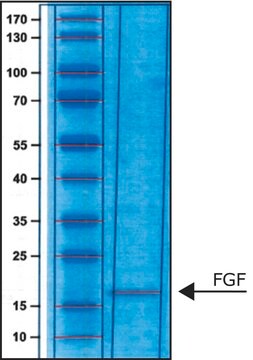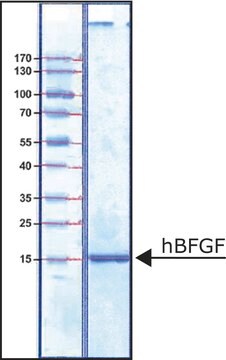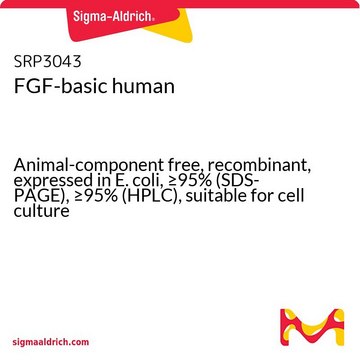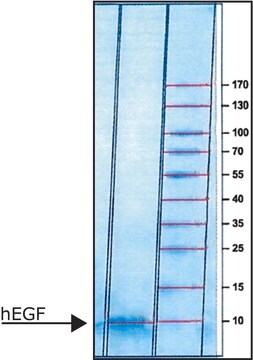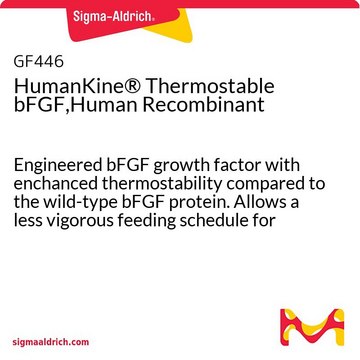F5392
Fibroblast Growth Factor-Basic from bovine pituitary
~90% (SDS-PAGE and N-terminal analysis), lyophilized powder, suitable for cell culture
Sinónimos:
FGF2, bFGF
About This Item
Productos recomendados
Nombre del producto
Fibroblast Growth Factor-Basic from bovine pituitary, FGF-Basic, suitable for cell culture
origen biológico
bovine pituitary glands
Nivel de calidad
Ensayo
~90% (SDS-PAGE and N-terminal analysis)
Formulario
lyophilized powder
potencia
0.03-3.0 ng/mL ED50/EC50
calidad
endotoxin tested
mol peso
16.4 kDa
envase
pkg of 1 μg
condiciones de almacenamiento
avoid repeated freeze/thaw cycles
técnicas
cell culture | mammalian: suitable
impurezas
<0.5 EU/vial
color
white
Nº de acceso UniProt
temp. de almacenamiento
−20°C
Información sobre el gen
bovine ... FGF2(281161)
Descripción general
Aplicación
Fibroblast Growth Factor-Basic from bovine pituitary has been used:
- In animal and human cell culture
- In neuronal induction of adipose and bone marrow-derived rat mesenchymal stem cells
- In the generation of directly reprogramming fibroblast
- In human glioma cell culture
Acciones bioquímicas o fisiológicas
Forma física
Nota de preparación
Nota de análisis
Producto relacionado
Código de clase de almacenamiento
11 - Combustible Solids
Clase de riesgo para el agua (WGK)
WGK 3
Punto de inflamabilidad (°F)
Not applicable
Punto de inflamabilidad (°C)
Not applicable
Equipo de protección personal
Eyeshields, Gloves, type N95 (US)
Elija entre una de las versiones más recientes:
¿Ya tiene este producto?
Encuentre la documentación para los productos que ha comprado recientemente en la Biblioteca de documentos.
Los clientes también vieron
Nuestro equipo de científicos tiene experiencia en todas las áreas de investigación: Ciencias de la vida, Ciencia de los materiales, Síntesis química, Cromatografía, Analítica y muchas otras.
Póngase en contacto con el Servicio técnico